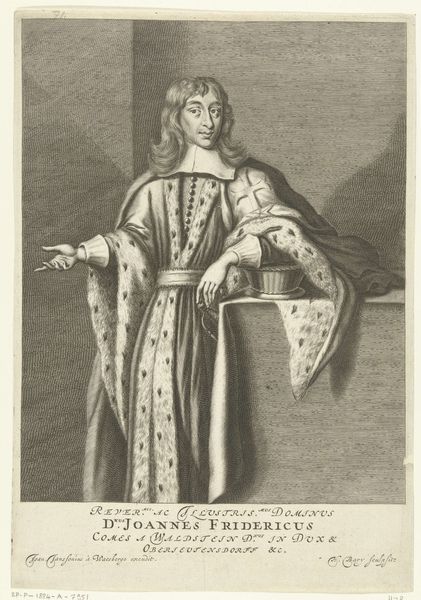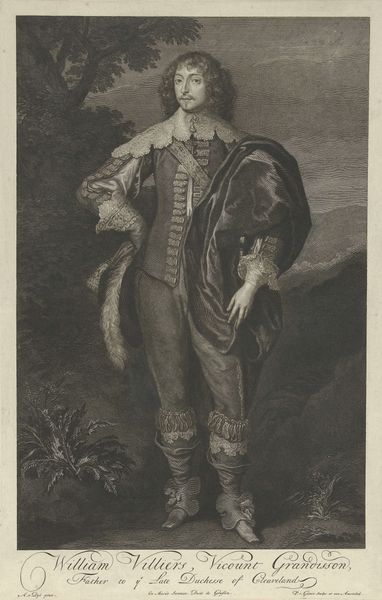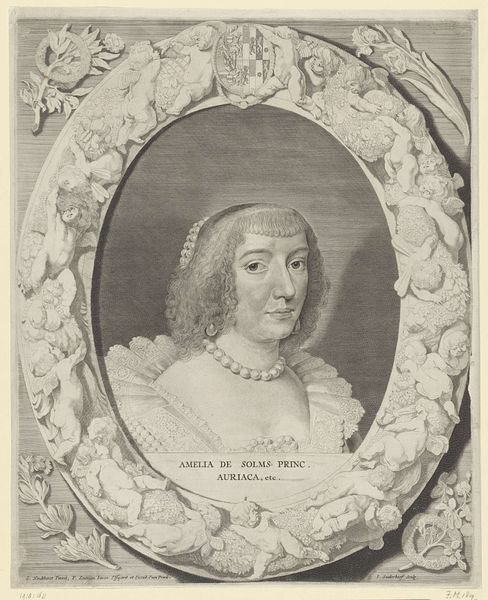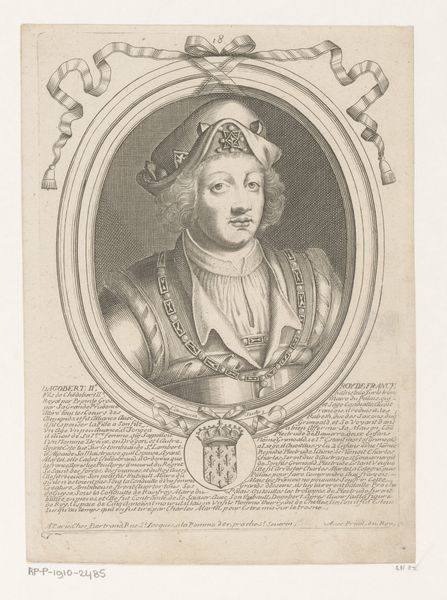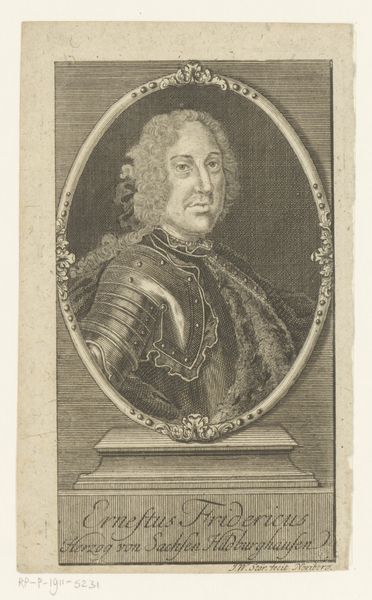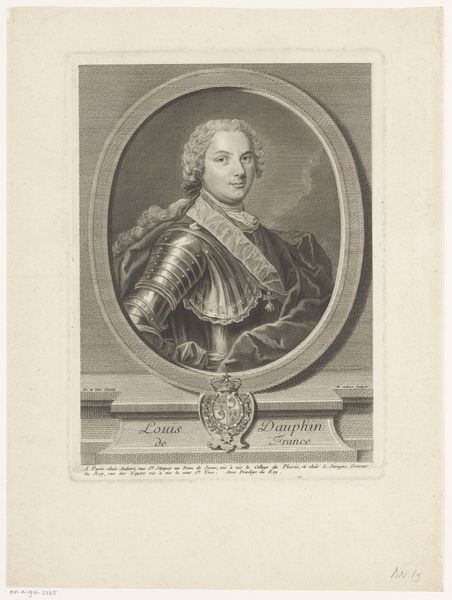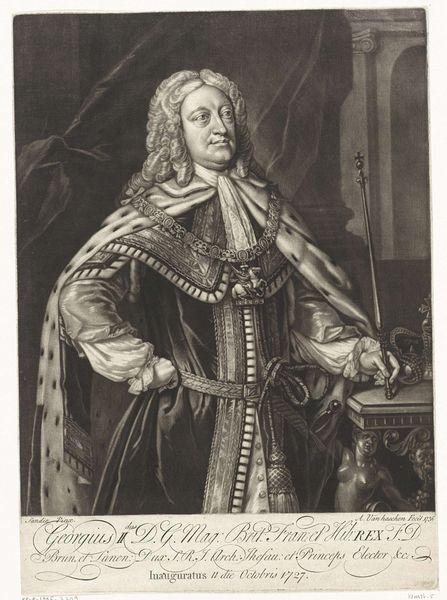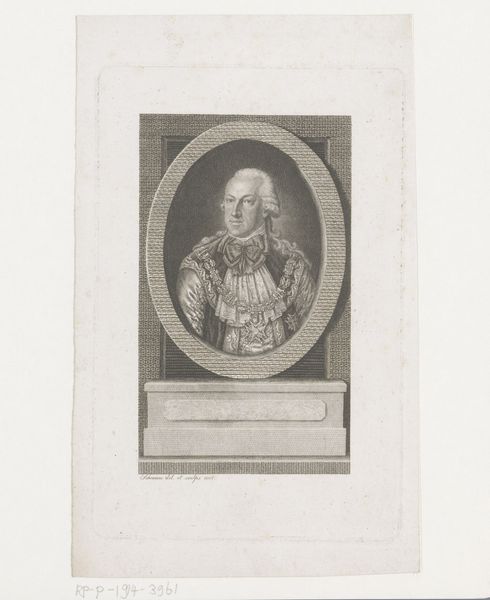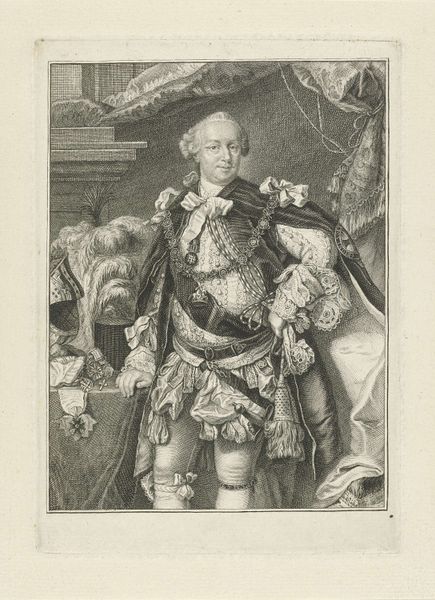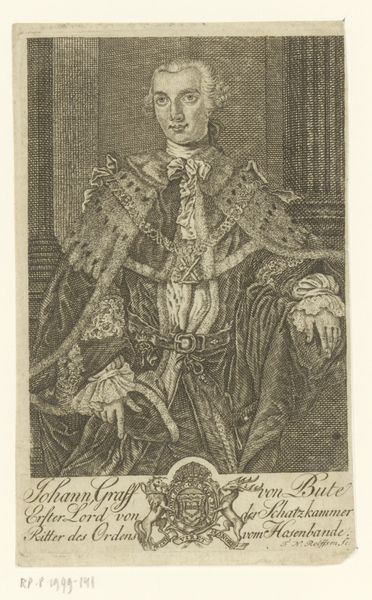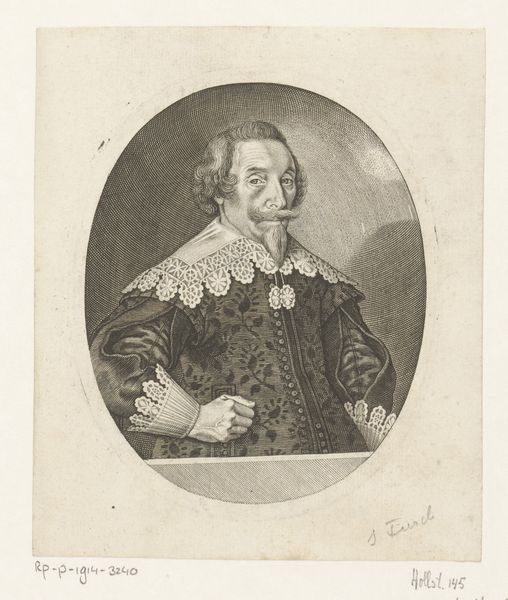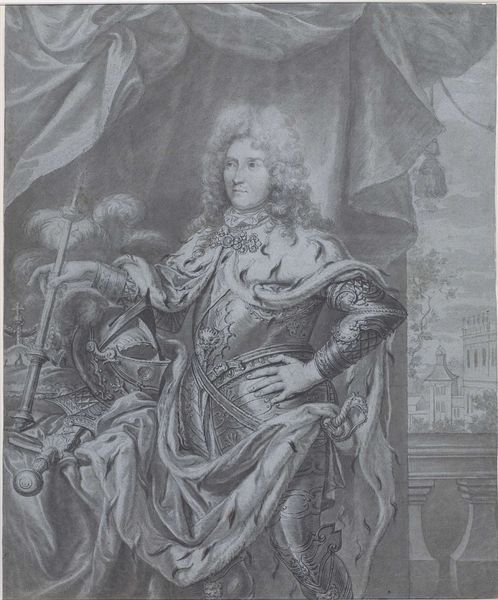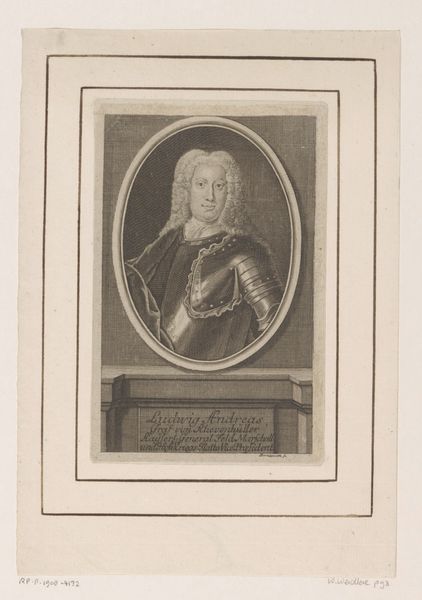
Dimensions: 369 mm (height) x 296 mm (width) (billedmaal), 441 mm (height) x 319 mm (width) (bladmaal)
Wilhelm Heuer created this engraving of Kong Christian IV sometime in the first half of the 19th century. Engravings like this one were important tools for circulating images and solidifying historical narratives during this period in Denmark. Looking at the image, consider the emphasis on Christian IV's regal attire and confident pose. These are visual codes that project power and legitimacy. This image likely reflects a desire to establish a clear, continuous national identity, an effort seen across Europe at this time. Christian IV, who ruled Denmark and Norway from 1588 to 1648, was a popular symbol for the construction of Danish national identity in the 19th century, a time when national symbols were deployed to unite populations under a shared history. As art historians, we must ask: What role did institutions like the Statens Museum for Kunst play in shaping this narrative? And how did images like this one contribute to the public understanding of Danish history? By examining the social conditions and institutional contexts in which art is made and displayed, we can better understand its power and meaning.
Comments
No comments
Be the first to comment and join the conversation on the ultimate creative platform.
